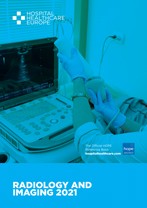Autopsies of patients with traumatic brain injury have found increased levels of tau aggregation and neuroinflammation but combining PET/MRI scanning has enabled the visualisation of these changes among living patients with sports-related injuries.
Sports-related concussion (SRC) occurs when an external force is transmitted to the head and produces transient neurological symptoms. However, there is increasing evidence that individuals who have experienced repeated SRCs when examined at autopsy, are found to display an accumulation and aggregation of the protein, tau, which helps stabilise neurons combined with persistent neuroinflammation. In addition, traumatic brain injury (TBI) is a chronic disease, which leads to progressive white matter atrophy and persistent inflammation. It is possible therefore that repeated SRC might represent a harbinger of TBI but the evidence for this possible association is based on the findings from autopsies.
Is it possible therefore, wondered a team from the Department of Clinical Sciences, Lund University, Sweden, that imaging of the brains of individuals who have suffered SRCs and those with TBI might reveal similar changes?
The researchers recruited healthy young adults, who served as controls, athletes who had previously experienced SRCs and individuals with moderate-to-severe TBI. For the study, the researchers combined the use of positron emission tomography (PET) and magnetic resonance imaging to view images of the brains of their subjects. On the day of the scans, all participants were assessed using the repeated battery assessment of neurological status (RBANS), which provides a measure of attention, language, memory and visuospatial/constructive skills, i.e., overall cognitive skills with higher scores associated less cognitive impairment. Prior to the PET scans, participants were injected with two biomarkers; the neuroinflammation tracer, [11C]-PK11195, which was used to assess neurofilament-light (NF-L) levels, which is a measure of neuroaxonal damage, and later the tau tracer, [18F]-THK5317 that can assess for tau burden. The MRI scans were performed during PET scanning.
Findings
A total of 9 controls, 12 SRC and 6 TBI participants were recruited with a similar mean age (26 years) with 4 male patients in the control and TBI groups. Among the 12 SRC participants, 8 has been ice hockey players and the others were either footballers or Alpine skiers. Both the TBI and SRC groups had lower RBANS scores compared with controls, 75, 80 and 105.5, respectively (p < 0.05). Free tau levels were lowest in those with a TBI (reflecting greater aggregation) compared to controls and those with SRC (3.4 picog/ml, 4.0 picog/ml and 4.7 picog/ml, respectively). Similarly, the highest levels of NF-L (i.e., greater levels of neuroinflammation) were seen in those with TBI compared with controls and SRC (10, 6 and 8, respectively).
Discussing these findings, the authors outlined how on a group levels, both young athletes and TBI patients had increased levels of tau aggregation and neuroinflammation, even though the imaging had occurred six months, and up to several years, after the last SRC or TBI. They authors suggested that this implied a persistent pathology and thought that the reduced free tau levels might be a consequence of decreased release from damaged neurons.
They concluded that the presence of both increased tau aggregation and neuroinflammation among those with TBI and SRC implied a similar pathology, and that follow-up PET imaging was required to establish whether the observed changes persist over time and if such changes are associated with clinical symptoms.
Citation
Marklund N et al. Tau aggregation and increased neuroinflammation in athletes after sports-related concussions and in traumatic brain injury patients – A PET/ MR study. Neurolmage Clin 2021;30:102665. https://doi.org/10.1016/j.nicl.2021.102665





